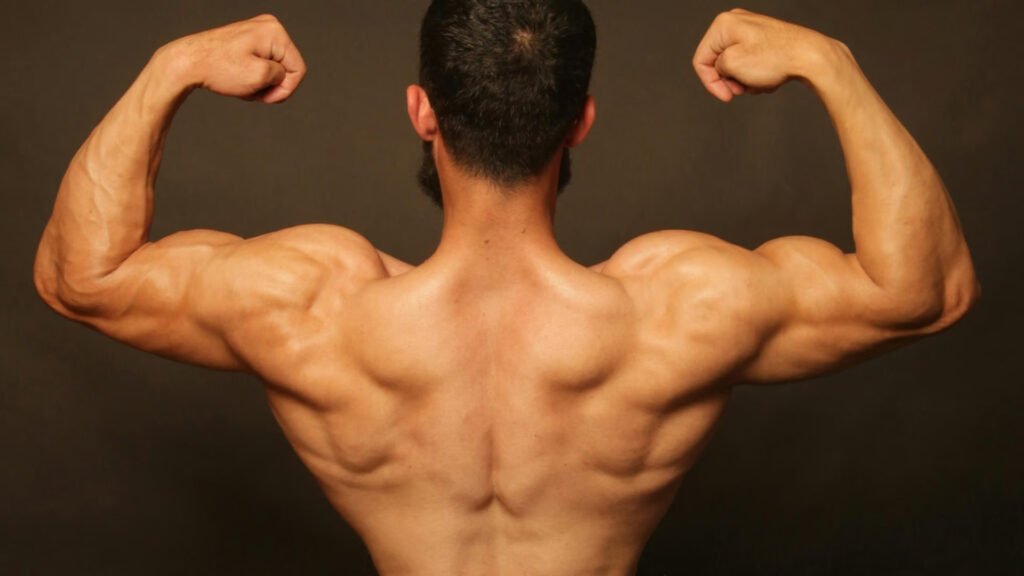
Shoulder Training: Building Strength, Size, and Stability
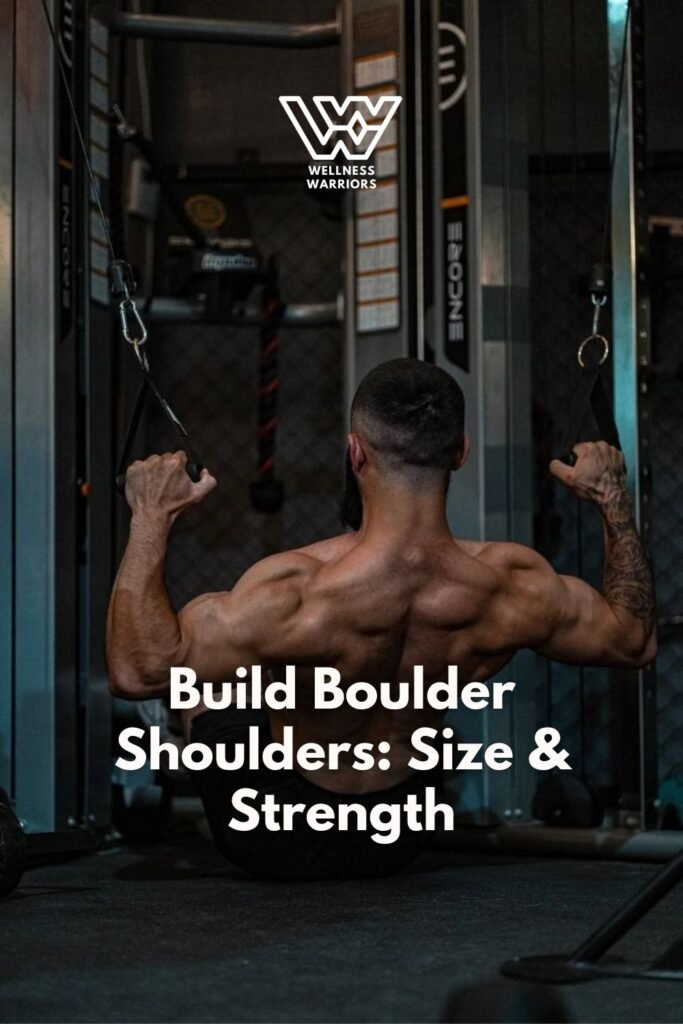
Welcome, Wellness Warriors! Today, we’re diving deep into the world of shoulder training to help you build those boulder shoulders you’ve always dreamed of. Whether you’re a seasoned gym-goer or just starting your fitness journey, this comprehensive guide will equip you with the knowledge and techniques to take your shoulder game to the next level.
Please find below our best shoulder workouts ! working on your upper arms and all the shoulder region for best results in your everyday life !
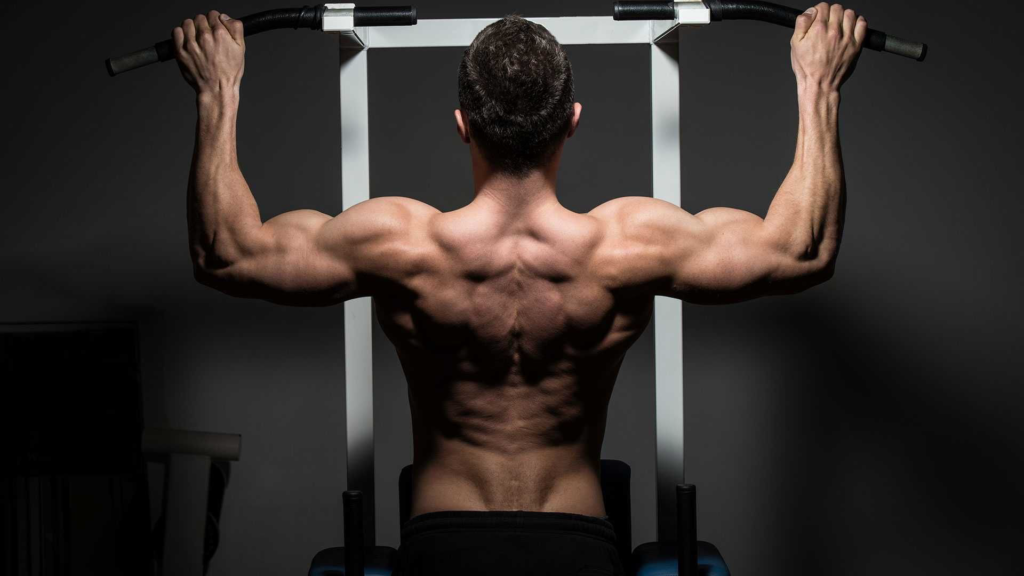
Understanding Shoulder Anatomy: The Foundation of Your Training
Before we jump into the exercises, let’s take a moment to appreciate the complex machinery that is your shoulder. The shoulder comprises the shoulder joint, shoulder blades, and three deltoid heads: anterior (front), lateral (side), and posterior (rear) deltoids . Each of these muscle groups plays a vital role in shoulder movement and stability, which is why a well-rounded shoulder training is crucial for balanced development and injury prevention.
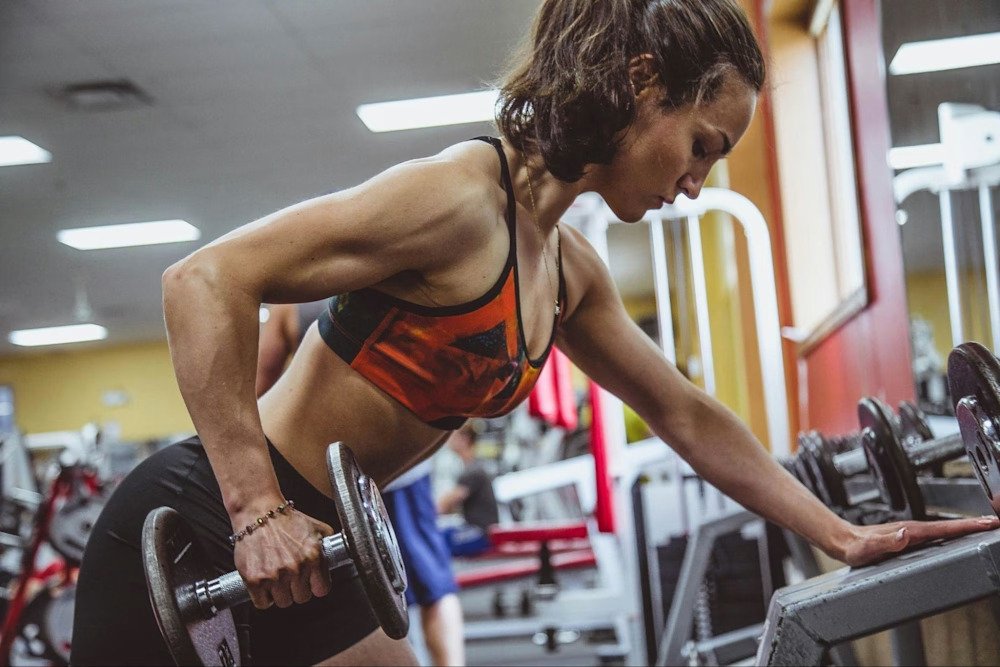
Understanding Shoulder Muscles
The shoulder is a complex structure that allows for a wide range of motion, thanks to its unique ball-and-socket joint configuration. This joint is supported by several key muscle groups that work together to facilitate movement and provide stability. Here’s a detailed look at the primary muscles involved in shoulder function.
1. Deltoid Muscles
The deltoid is the most prominent muscle of the shoulder, covering the glenohumeral joint. It consists of three distinct heads:
✔ Anterior Deltoid: Located at the front of the shoulder, this muscle is primarily responsible for shoulder flexion and internal rotation.
✔ Lateral Deltoid: Positioned on the side, it plays a crucial role in shoulder abduction, helping to lift the arm away from the body.
✔ Posterior Deltoid: Found at the back, this head aids in shoulder extension and external rotation.
Together, these deltoid heads allow for a wide range of arm movements, making them essential for upper body activities.
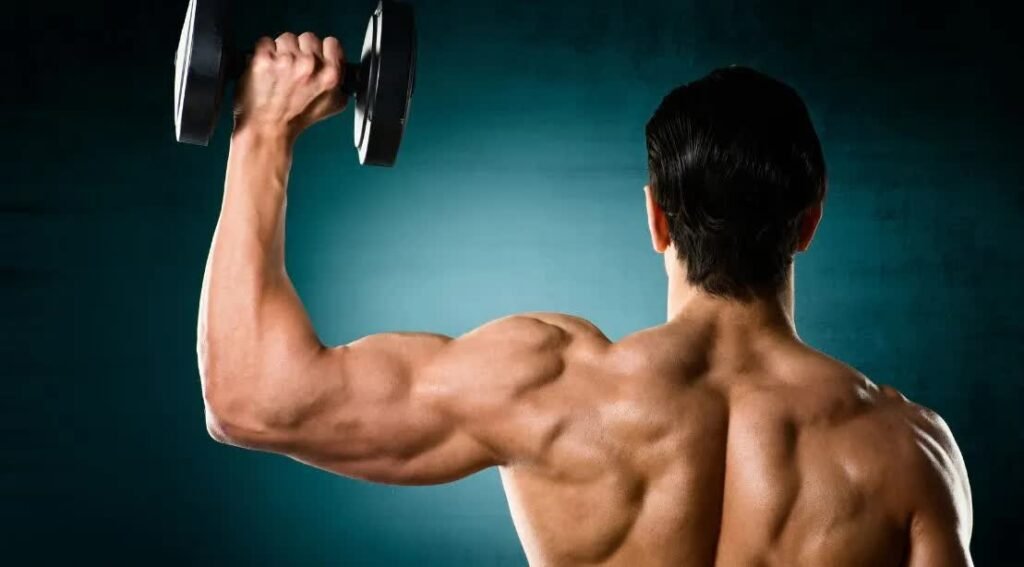
2. Rotator Cuff Muscles
The rotator cuff is a group of four muscles that provide stability to the shoulder joint by keeping the humeral head securely in its socket. These muscles include:
✔ Supraspinatus: This muscle initiates arm abduction and is crucial for stabilizing the shoulder.
✔ Infraspinatus: Responsible for external rotation of the arm, it also helps stabilize the shoulder joint.
✔ Teres Minor: Works alongside the infraspinatus to assist in external rotation.
Subscapularis: This muscle is located on the front of the shoulder and is responsible for internal rotation of the arm.
The rotator cuff muscles are vital for both dynamic stability and mobility of the shoulder, making them essential for various overhead activities.
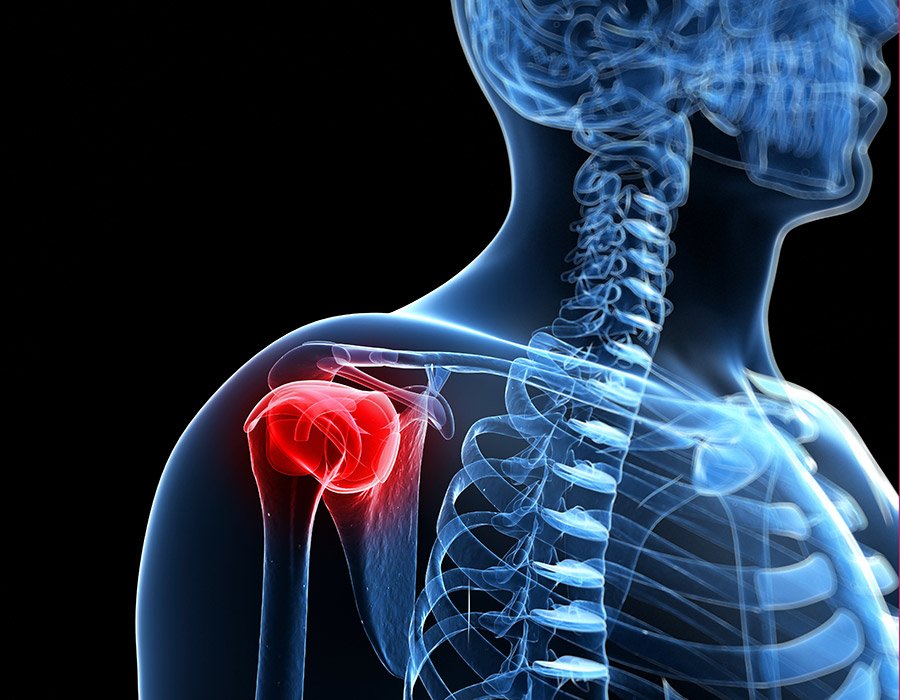
3. Pectoralis Major and Minor
The pectoralis major is a large, fan-shaped muscle that spans from the collarbone to the mid-chest. It plays a significant role in shoulder flexion, adduction, and internal rotation. The pectoralis minor, located beneath the major, assists in stabilizing the shoulder blade and elevating the ribs during deep inhalation.
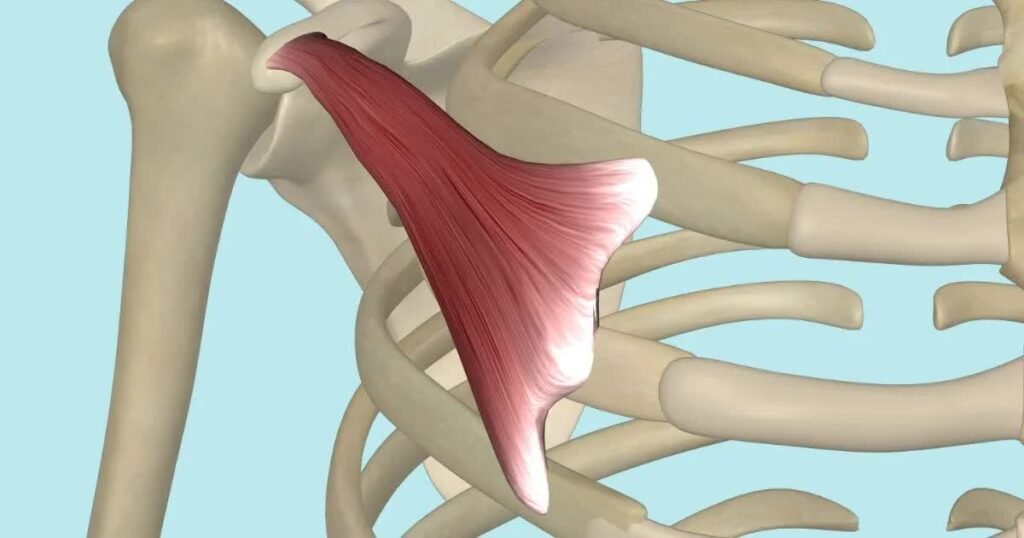
4. Latissimus Dorsi
The latissimus dorsi is a broad muscle that extends from the lower back to the upper arm. It is involved in shoulder extension, adduction, and internal rotation. This muscle is particularly important for movements that require pulling, such as rowing or climbing.
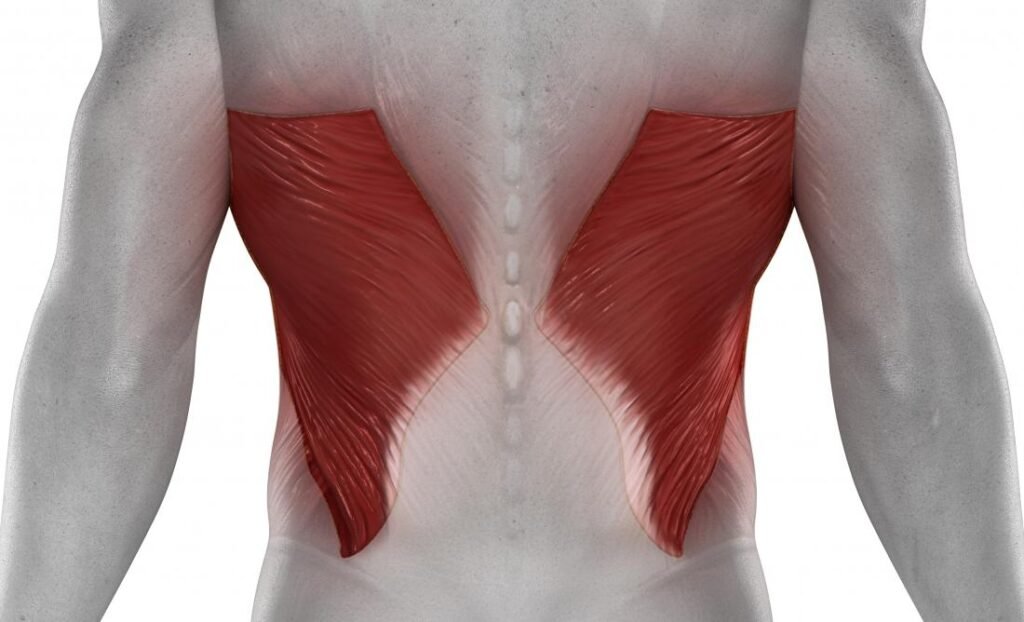
5. Teres Major
Often considered a helper muscle to the latissimus dorsi, the teres major assists in shoulder adduction and internal rotation. It originates from the lower part of the scapula and inserts into the humerus.
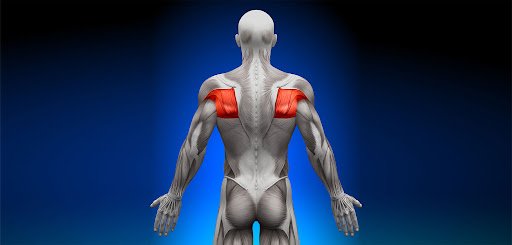
6. Rhomboids
The rhomboid major and minor muscles are located between the shoulder blades. They play a crucial role in retracting the scapula, which is essential for maintaining good posture and shoulder stability.
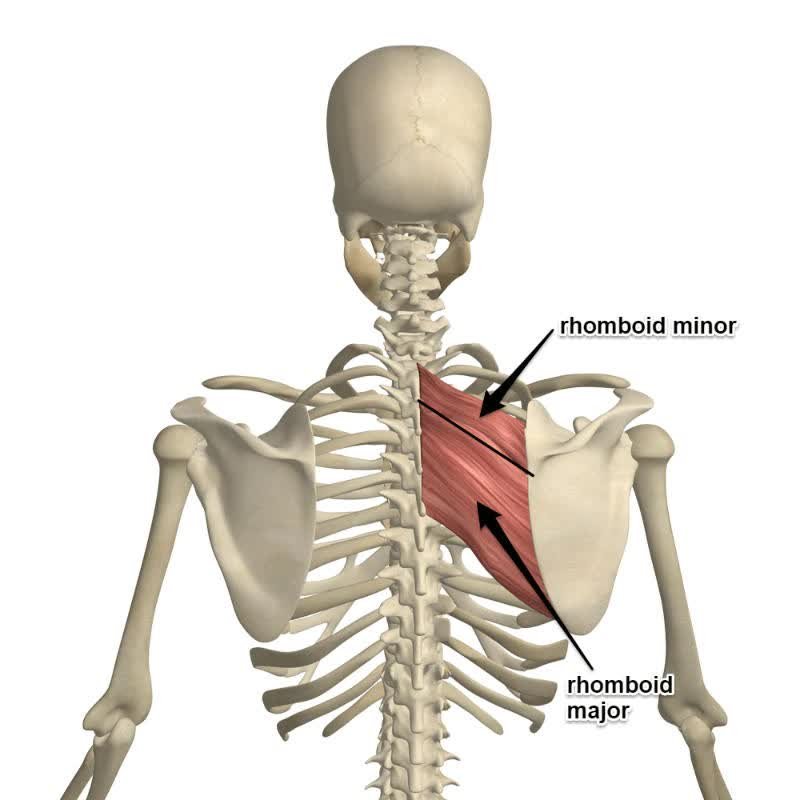
7. Serratus Anterior
The serratus anterior is located on the side of the chest and is responsible for protracting the scapula, allowing for upward rotation of the shoulder blade. This muscle is vital for overhead movements and helps stabilize the shoulder during various activities.
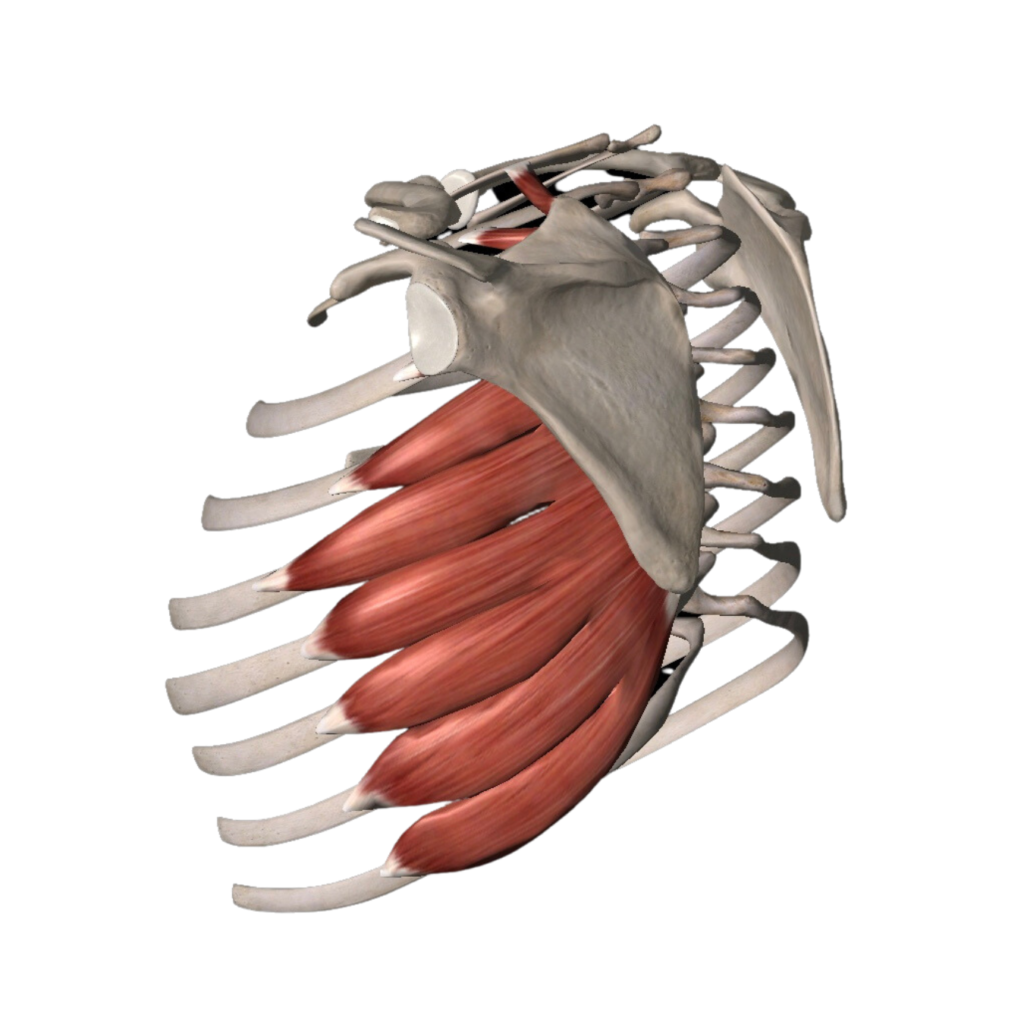
The Science Behind Effective Shoulder Training
Recent scientific studies have shed light on the most effective shoulder exercises for muscle growth and strength. The American Council on Exercise (ACE) conducted a study using electromyography (EMG) to measure muscle activation during various shoulder exercises.
The results? The dumbbell shoulder press came out on top for the anterior deltoid, while the 45-degree incline row and bent-arm lateral raise were champions for the medial deltoid. For the often-neglected posterior deltoid, the seated rear lateral raise and the 45-degree incline row took the crown.
But that’s not all! Another study compared dumbbell and barbell shoulder presses, revealing that dumbbell presses, especially when performed standing, resulted in greater muscle activation in the anterior deltoids compared to their barbell counterparts. This information is gold for those looking to maximize their shoulder gains.
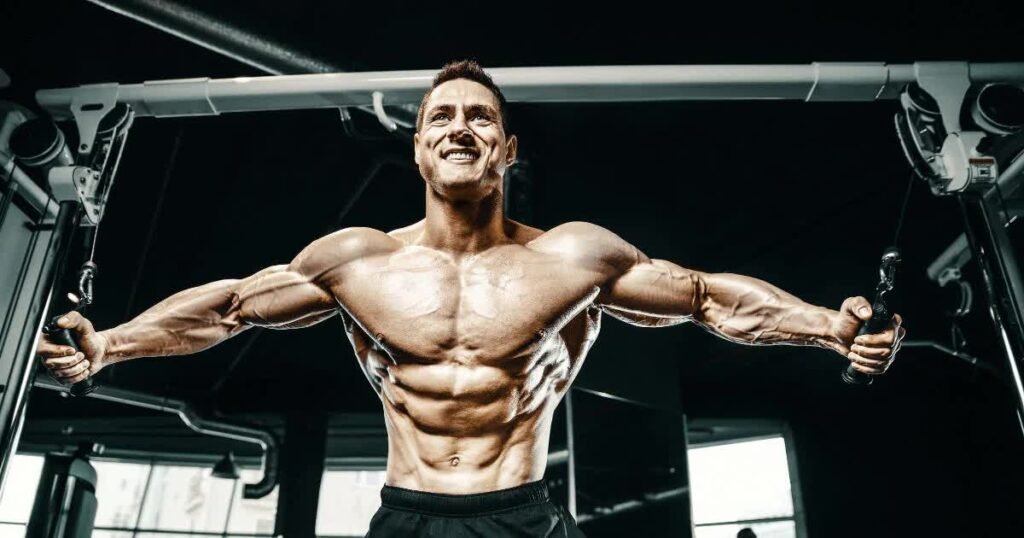
READ MORE: Best Legs Training Exercise Ultimate Guide!
The Magnificent Seven: Top Shoulder Exercises for Strength and Size
Now that we’ve laid the groundwork, let’s dive into the cream of the crop when it comes to shoulder training . These seven movements will target all aspects of your shoulders, ensuring balanced development and impressive results.
1. Dumbbell Shoulder Press: The King of Shoulder Exercises
The dumbbell shoulder press reigns supreme for a reason. It’s highly effective for targeting the anterior deltoid and allows for a greater range of motion compared to its barbell counterpart.
Form and Technique:
✔ Sit on a bench with back support, holding dumbbells at shoulder height with palms facing forward.
✔ Press the weights overhead until your arms are fully extended, but avoid locking your elbows.
✔ Engage your core to maintain a neutral spine and avoid arching your back.
Keep your movements controlled and avoid using momentum.
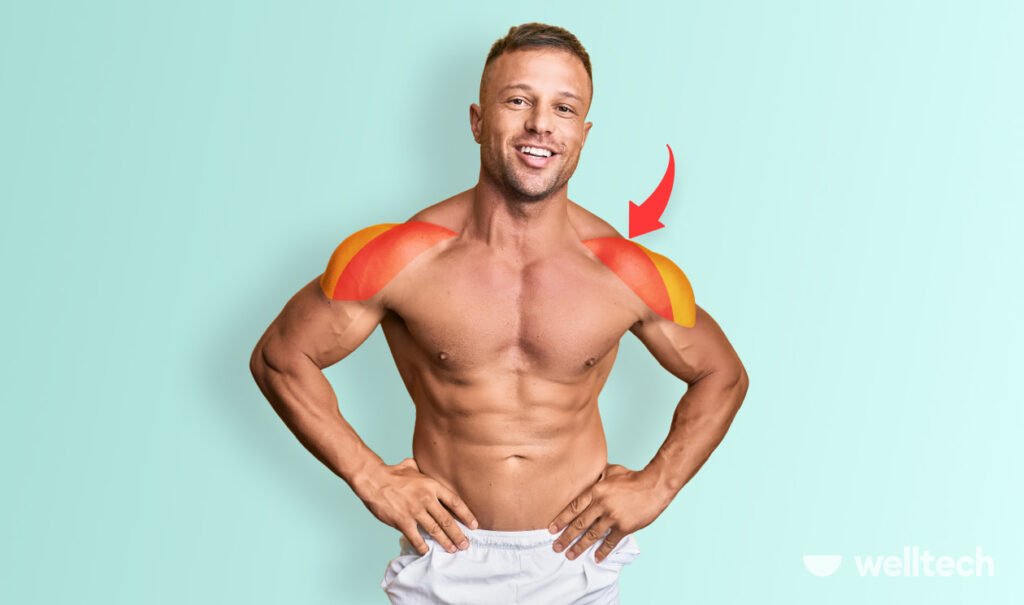
2. Lateral Raises: Sculpting Those Shoulder Caps
Lateral raises are the go-to exercise for targeting the lateral deltoid, helping to create the appearance of broader shoulders. EMG studies have shown that lateral raises specifically target the medial deltoid more effectively than other shoulder training
Form and Technique:
✔ Stand with feet shoulder-width apart, holding dumbbells at your sides.
✔ Raise your arms out to the sides until they are parallel to the floor, keeping a slight bend in the elbows.
✔ Focus on slow, controlled movements to engage the lateral deltoids effectively.
Avoid swinging the weights or using your body to lift them.
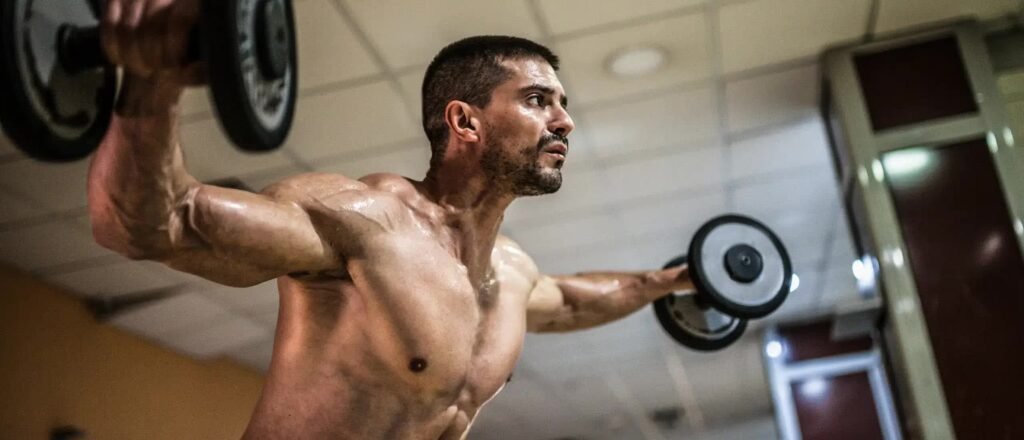
3. Military Press: The Classic Compound Movement
Also known as the overhead press, this exercise is a compound movement that engages the anterior deltoid, triceps, and upper back. It’s effective for building overall shoulder strength and size.
Form and Technique:
✔ Stand with feet shoulder-width apart, holding a barbell at shoulder height.
✔ Press the barbell overhead until your arms are fully extended.
✔ Keep your core tight and avoid arching your back.
Ensure your elbows are slightly bent at the top of the movement to prevent joint strain.
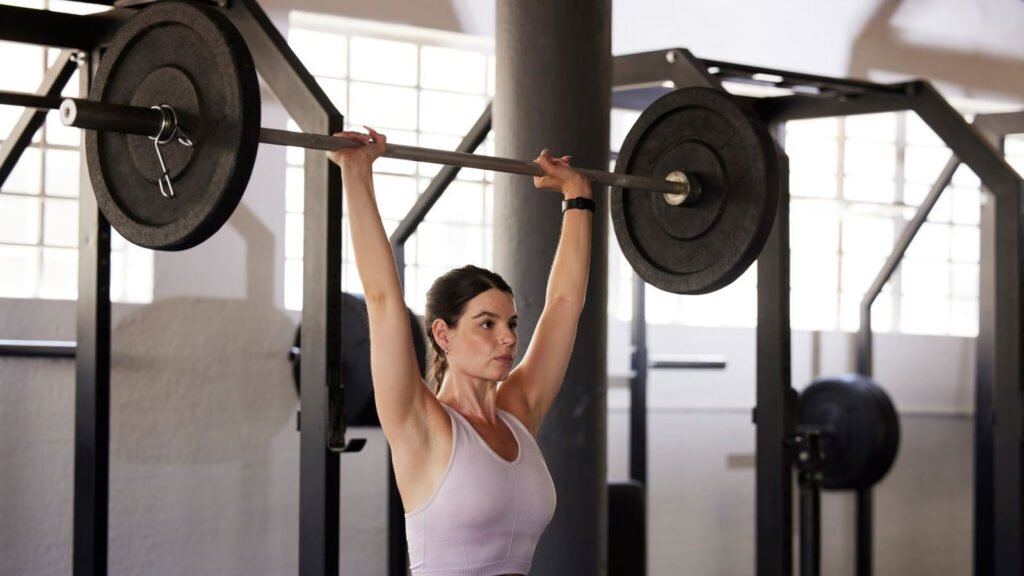
4. Arnold Press: The Twist That Targets It All
Named after the legendary Arnold Schwarzenegger, this variation of the shoulder press involves a rotation that increases the range of motion and targets both the anterior and medial deltoids.
Form and Technique:
✔ Sit on a bench with back support, holding dumbbells in front of you with palms facing your body.
✔ As you press the weights overhead, rotate your palms outward.
✔ Ensure a smooth rotation of the wrists and maintain control throughout the movement to engage all three heads of the deltoids.
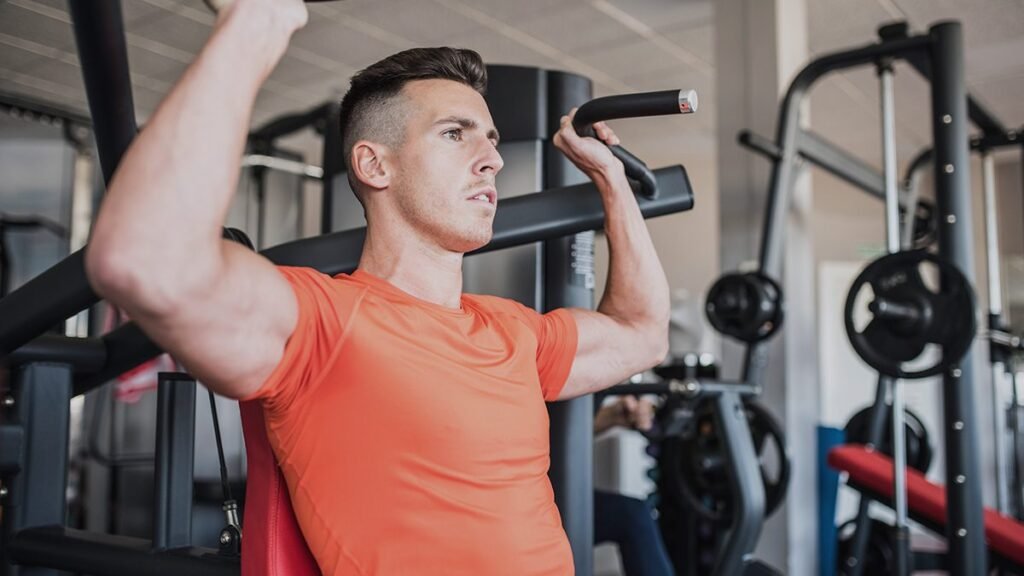
5. Face Pulls: The Unsung Hero of Shoulder Health
Face pulls are excellent for targeting the rear deltoids and improving shoulder stability, which is crucial for overall shoulder health and posture.
Form and Technique:
✔ Use a cable machine with a rope attachment set at upper chest height.
✔ Pull the rope towards your face, flaring your elbows out.
✔ Focus on squeezing your shoulder blades together at the end of the movement to engage the rear deltoids.
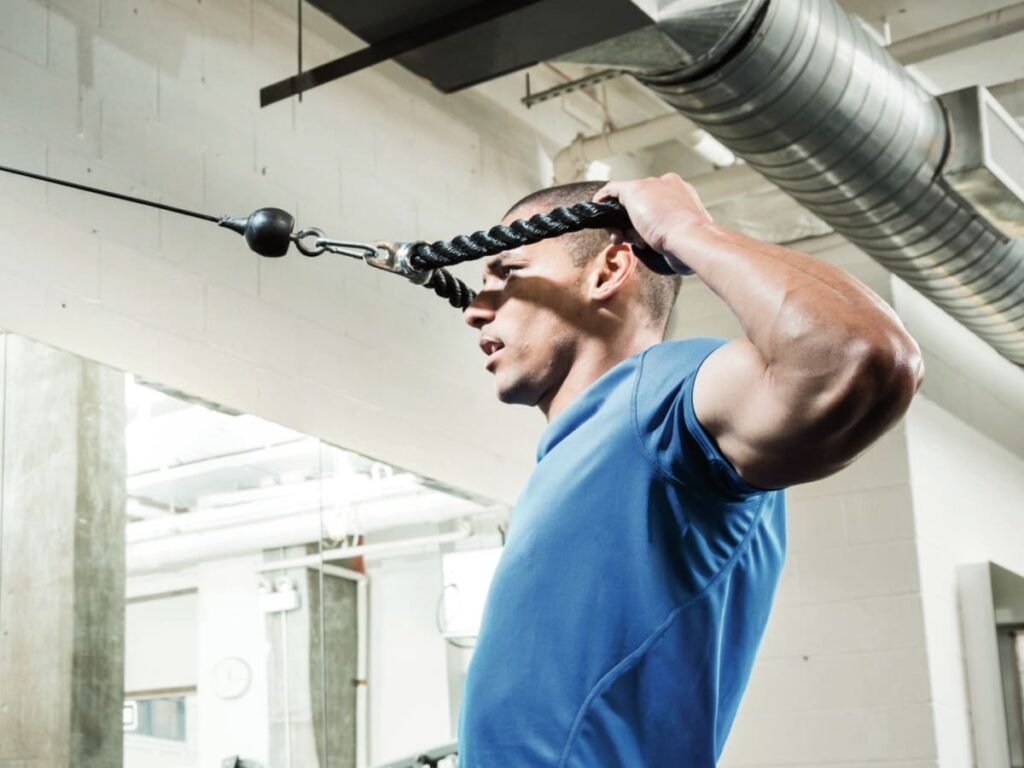
6. Upright Rows: Building Those Boulder Shoulders
While controversial due to potential shoulder impingement issues, when performed correctly with a wider grip, upright rows effectively target the deltoids and traps.
Form and Technique:
✔ Stand with feet shoulder-width apart, holding a barbell or dumbbells with an overhand grip.
✔ Pull the weights up towards your chin, leading with your elbows.
✔ Keep the weights close to your body and avoid lifting your elbows above shoulder height to prevent shoulder impingement.

7. Rear Delt Fly: Don’t Forget the Back
This shoulder training targets the posterior deltoid, which is often neglected in shoulder workouts. It’s crucial for balanced shoulder development and helps improve posture.
Form and Technique:
✔ Bend forward at the hips with a slight bend in the knees, holding dumbbells with palms facing each other.
✔ Raise your arms out to the sides, squeezing your shoulder blades together.
✔ Maintain a flat back and avoid rounding your shoulders.
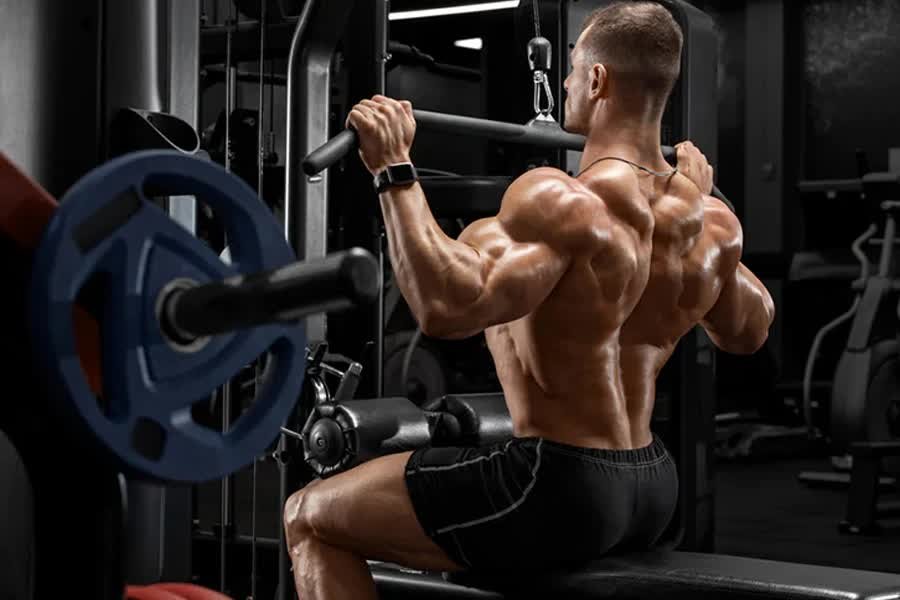
Crafting the Perfect Shoulder Workout
Now that we’ve covered the best exercises, let’s put them together into a killer shoulder workout.
Here’s a sample structure that will have your delts crying for mercy (in a good way):
1. Military Press: 4 sets of 6-8 reps
2. Lateral Raises: 3 sets of 10-12 reps
3. Arnold Press: 3 sets of 8-10 reps
4. Face Pulls: 3 sets of 12-15 reps
5. Rear Delt Fly: 3 sets of 10-12 reps
Remember, the key to continued progress is progressive overload. This means gradually increasing the weight, reps, or sets over time to keep challenging your muscles. Don’t be afraid to mix things up by incorporating variations like the zero momentum side lateral raise or the overhead band press to keep your muscles guessing and growing.
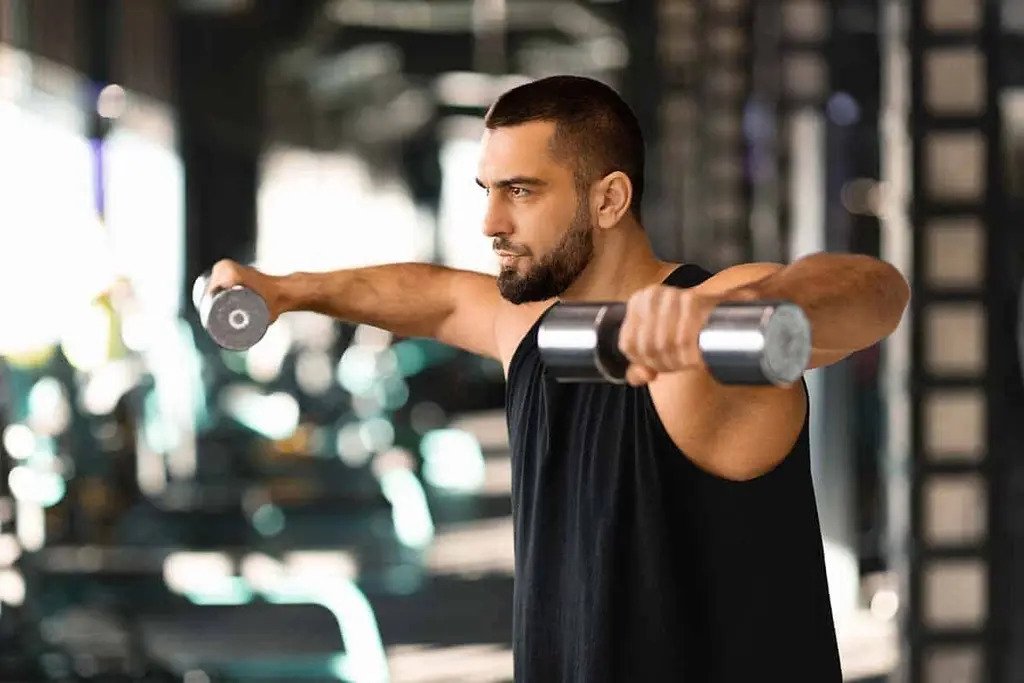
Training Frequency and Recovery: The Unsung Heroes of Gains
While it’s tempting to hammer your shoulders every day in pursuit of those boulder delts, remember that recovery is where the magic happens. It’s generally recommended to train shoulders twice a week with at least 48 hours of rest between sessions. This frequency allows for sufficient recovery and growth while preventing overtraining.
Listen to your body and adjust your training volume and intensity accordingly. If you’re feeling particularly sore or fatigued, it’s okay to take an extra rest day or reduce the intensity of your workout. Remember, consistency over time is what leads to real, lasting results.
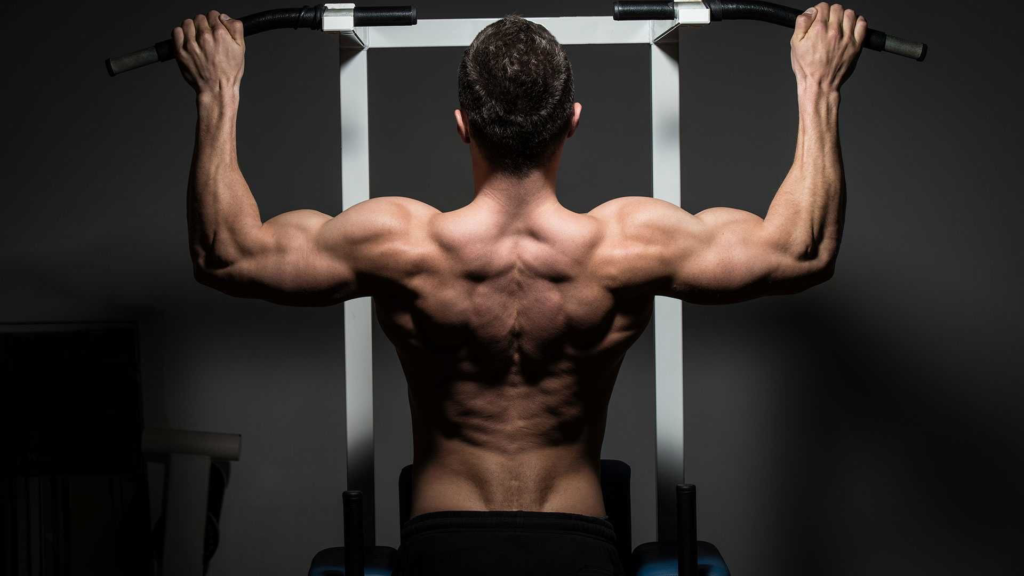
Injury Prevention: Keeping Those Shoulders Healthy
As with any training regimen, injury prevention should be a top priority. Common shoulder injuries include rotator cuff tears, shoulder impingement syndrome, and labral tears.
To minimize your risk of injury:
1. Always warm up properly before your workout.
2. Focus on maintaining proper form throughout your exercises.
3. Incorporate exercises that strengthen the rotator cuff muscles.
4. Gradually increase the intensity and volume of your workouts.
5. Include stretching and mobility work in your routine.
If you experience persistent pain or discomfort, don’t hesitate to consult a healthcare professional or a qualified fitness trainer.
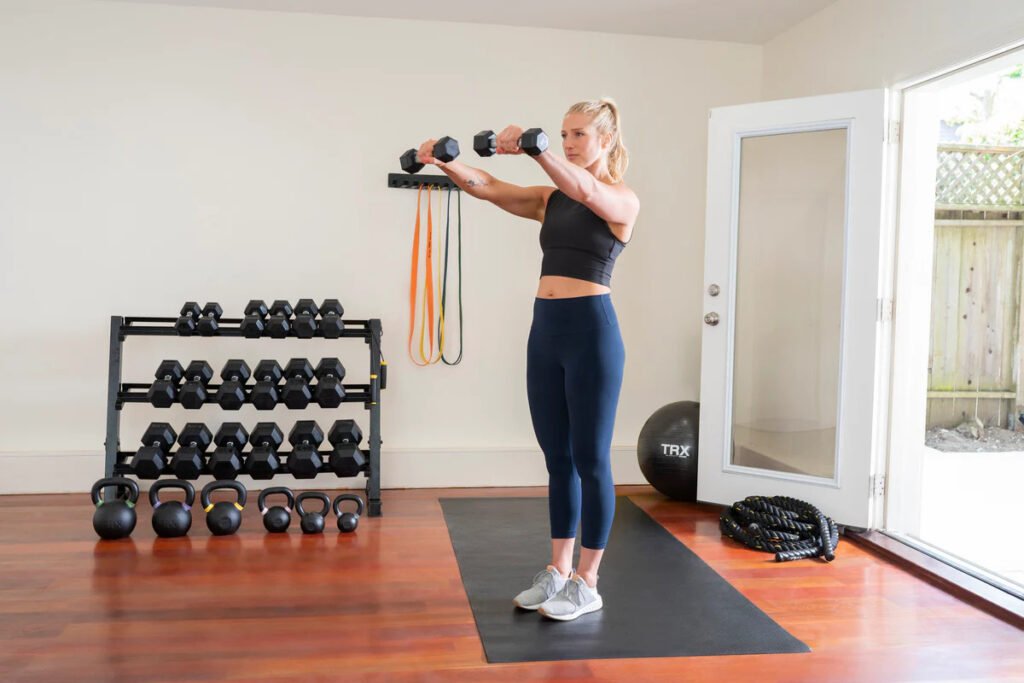
Conclusion: Your Journey to Spectacular Shoulders Starts Now
There you have it, Wellness Warriors! A comprehensive guide to building strong, sculpted shoulders that will turn heads and boost your confidence. Remember, the key to success lies in consistency, proper form, and progressive overload. Mix up your exercises, challenge yourself, and most importantly, enjoy the process.
So, what are you waiting for? It’s time to put this knowledge into action and start your journey towards spectacular shoulders. Your future self (and your t-shirts) will thank you!Stay strong, stay motivated, and keep pushing those boundaries. Until next time, Wellness Warriors!
